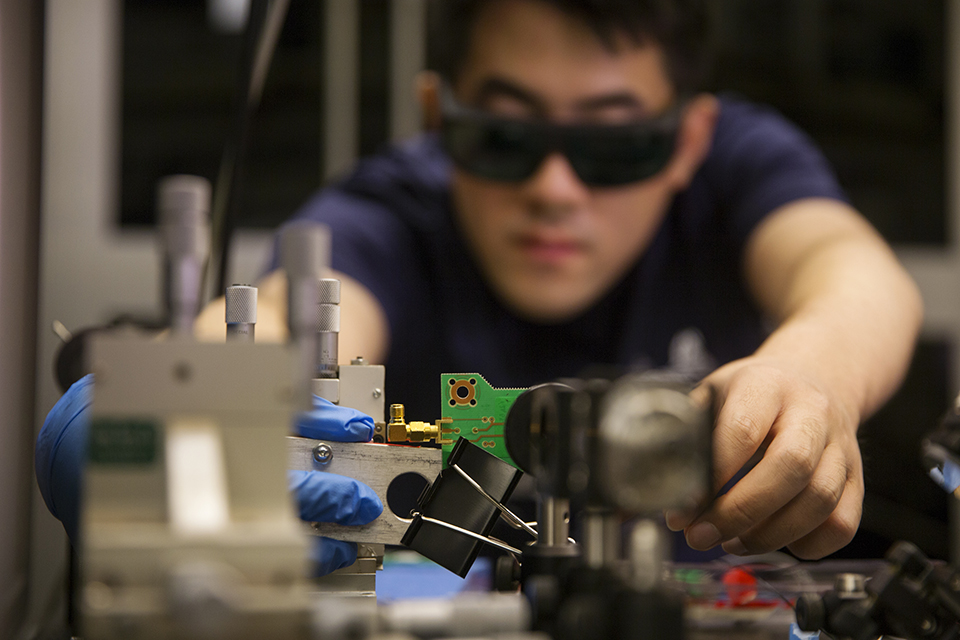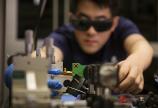Researcher sees gold in global search for faster computer
- Jody Paterson

Somewhere between gold and glass lies a new material that could end a decade of stagnant computer speeds, suggests a University of Victoria engineer whose research is adding to that vision.
“Computers have changed our lives in ways we never imagined,” says Reuven Gordon, Canada Research Chair in Nanoplasmonics. “But they stopped getting faster in the last 10 years because silicon as a semiconductor has reached its limit. The world is going to change in ways that we’re not going to recognize, but to get there, we need to overcome that silicon barrier.”
Gordon’s research involves finding ways to “squeeze” light to see molecules—work that has relevance in fields from health to energy. A beam of light from the sun is 1/200th the size of a single strand of hair, but has to be squeezed down to a size 200 times smaller still in health research in order to make visible the tiny proteins responsible for virtually every function in the human body.
So what’s that got to do with computers? Gordon and his research team frequently use gold surfaces and gold nanoparticles in their work, and recently ended up creating an artificial material that can switch from the conductive qualities of gold to the insulating qualities of glass.
In another experiment, Gordon’s team applied light to nanoparticles of gold to make them move 500 times faster than the “clock speed” of a computer, the millions or billions of pulses per second known as megahertz and gigahertz. Gordon thinks that this extremely rapid movement of the nanoparticles could ultimately revolutionize the speed of future-generation computers.
Quoted in the August edition of Nature Photonics magazine in a piece on functional quantum plasmonic metasurfaces, Gordon noted his team’s work identified “unprecedented flexibility in designing materials that can change their properties in a big way dynamically.”
Consider the shimmering iridescence of a peacock feather or a hummingbird’s neck, says Gordon. When light strikes an object, it gives it a colour, which changes depending on how the light hits it. Sound waves change an object’s interaction with light, resulting in a higher frequency than anything the world’s fastest computers can generate.
Computer processing speeds increased dramatically during the 1980s and ‘90s, but the silicon chips reached their limit a decade ago and those gains in speed have stopped. Information travels at the speed of light along the fiber optic cables that wire the modern world, but today’s silicon computer chips can’t retrieve and process information moving at that speed.
And while “supercomputers” do exist, they’re really just conglomerations of tens of thousands of slow processors, and are extreme users of energy: one supercomputer can rack up $8.5 million a year in electricity bills and require 11,400 litres of water a minute to stay cool.
Researchers around the world are exploring new ways to get around the silicon problem. The concept of light-based computers holds much promise, says Gordon, whose research is funded through a Discovery Grant from the Natural Sciences and EngineeringResearch Council.
“Now, others will take up our finding and build the research from there. It’s far from any kind of application right now, but it’s going to change a lot. Scientists are excited,” says Gordon. “What might this enable us to do?”

